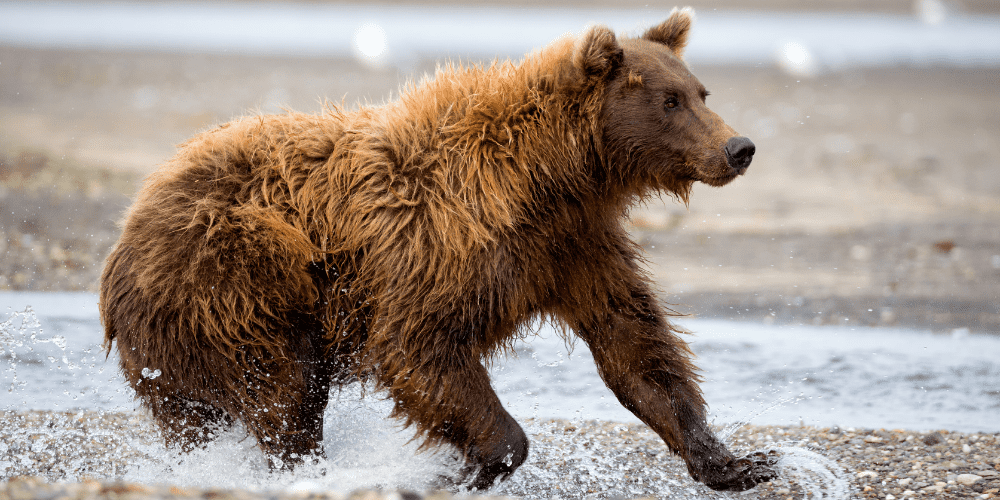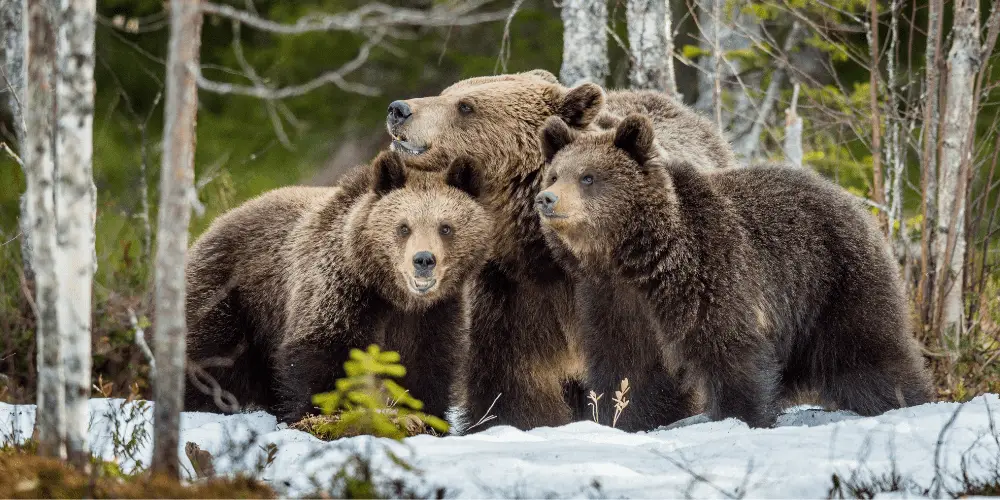When you look at a bear, you’d likely revere its size, tremendous strength, or even its charge over its domain. But what about its less obvious abilities? Have you ever wondered, “How fast can bears run?”
On average, bears can run anywhere between 25-35 mph. Though each of the eight species of bear differs in speed from one another, they all fall within this average. Some bears can manage to sprint their way up to speeds of 40 mph, but for only quick bursts.
That’s right. Bears can run several times faster than they appear able to run. For the most part, they can reach top speed almost instantaneously.
Size and weight make a big difference regarding how fast bears can run. Here’s a breakdown of the species’ best-running bears.
How Fast Can Black Bears Run?
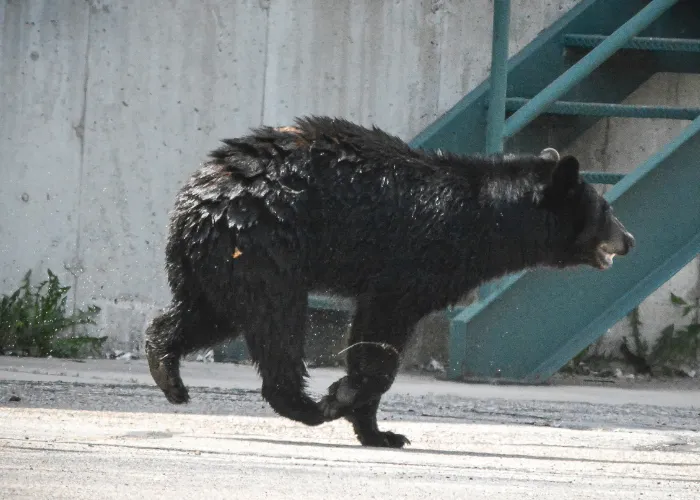
Black Bears are heralded as the smallest and fastest species of bear on this list. They can easily average speeds up to 35 mph, but toward the winter, when the bears are heavier and carrying more bulk, they have trouble sustaining such speed.
This is quite the change for an animal who typically lumbers around at a meager 4 mph. Black Bears can reach weights up to about 400 pounds, which makes their burst of speed more impressive (or terrifying if one is unfortunate enough to be chased by one).
How Fast Can Grizzly Bears Run?
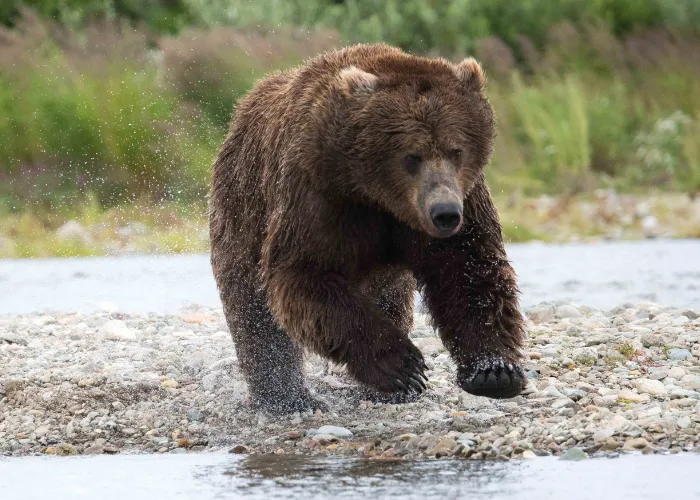
Grizzlies top out at about 35 mph. The speed reliably recorded at Yellowstone is 30 mph. What makes this such a crazy speed is how large and heavy a Grizzly Bear typically is.
While standing up to about 8 feet tall and weighing up to about 700 pounds, Grizzlies are nearly double the size of an American Black Bear. Yet, they can run almost as fast when in top gear.
But Grizzlies are more likely to reach this speed after hibernation before it begins to start putting on the pounds. As the seasons change and they become heavier in preparation for hibernation, 30-35 mph becomes more difficult to maintain for any real amount of time.
They overheat or tire easily after putting on more weight. So, what starts as a do-able run early in the year becomes a sudden, quick, and short-lived burst of speed by winter.
How Fast Can Brown Bears Run?
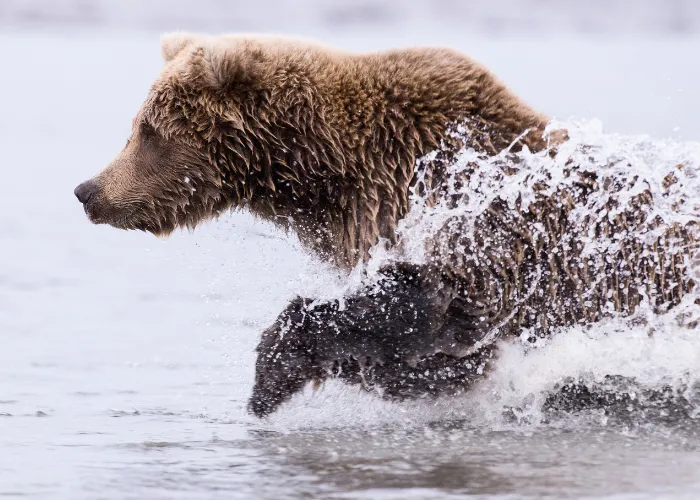
Brown Bears can reach top speeds of 35 mph.
I included Brown Bears here in the list because many people aren’t aware that Brown Bears are the same species as the Grizzly Bear, and the only difference is that Brown Bears are more associated with finding foods from coastal waters than Grizzlies.
Aside from their dietary preferences or habits, they’re the same bear who weighs the same, grows to the same size and runs at the same speeds.
How Fast Can Polar Bears Run?

Polar Bears are the largest of all bears, living solitary lives up in the arctic. Polar bears are heralded as the fastest and longest hauling swimming bears, but on land, they are a bit slower than the others, averaging at about 25 mph.
Though they are a bit slower, an adult male can weigh up to about 1,000 pounds (a lot of weight to move around). Though slower than others, it’s still an impressive feat.
Polar Bears have shorter claws and rougher pads on the bottom of their feet than other bears, such as Grizzlies—both aid in swimming, running and maneuvering over the arctic ice.
How Fast Can Kodiak Bears Run?
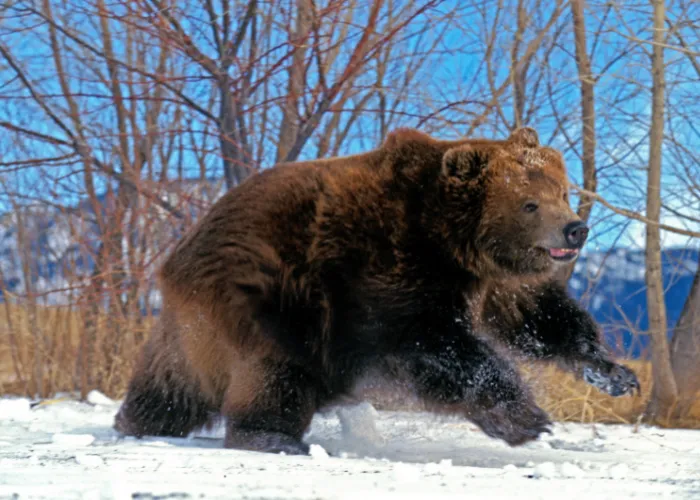
Kodiak Bears’ top speeds can average out at about 35 mph. Their build and weights are similar to those of the Brown and Grizzly Bears.
In almost every way, Kodiak Bears are the same as Brown Bears and Grizzlies. But, as dietary differences separate Grizzlies from Brown Bears, location separates the Kodiak from the other two.
Kodiak Bears are exclusively found on the islands of Kodiak Archipelago, off the coast of South-Western Alaska. Due to their separation from the other varieties of Brown Bear, their species has micro-evolved into a slightly larger animal.
How Long Can a Bear Run?
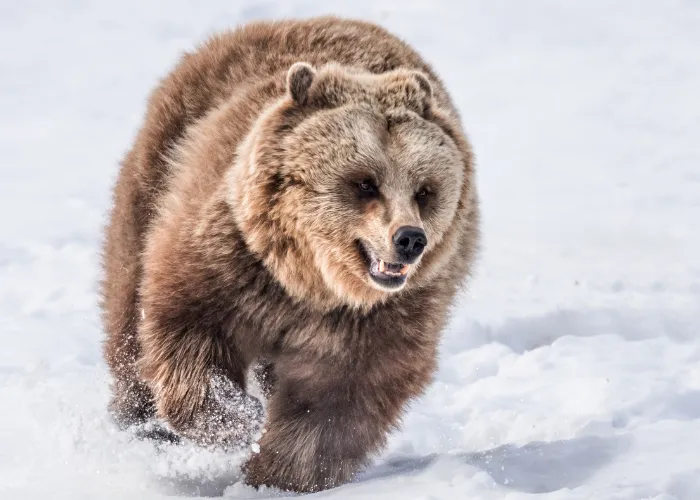
In this regard, size vs. speed = distance when trying to determine how far a bear can run. The heavier bears can reach top speeds quickly but burn out much faster than smaller bears.
The bigger the bear, the shorter the distance, so they’ll be able to maintain speed. Overall, bears can generally run about 2 miles at 25-28 mph.
That speed would generally be slower for the Polar Bear, who rarely runs for any amount of actual distance (if ever).
On the other side of the spectrum, Black Bears aren’t only the fastest but can run several miles more than all the others on the list. Adult male Black Bears can run up to 8-2 miles.
What to do if a Bear is Running Towards You?

If you’re unarmed and a bear decides to come running toward you, there’s only so much you can do. But what few options we have, we should be mindful of them.
- Large Bears: Stand Still and slowly wave your arms. The idea is that you’re trying to help them recognize you as a human- not food.
- Black Bears only: Get as big as you can while facing the bear. Spread your arms (or spread out your coat to give yourself the appearance of size). Also, make as much noise as possible to spook the bear from advancing further.
Can you Outrun a Bear?
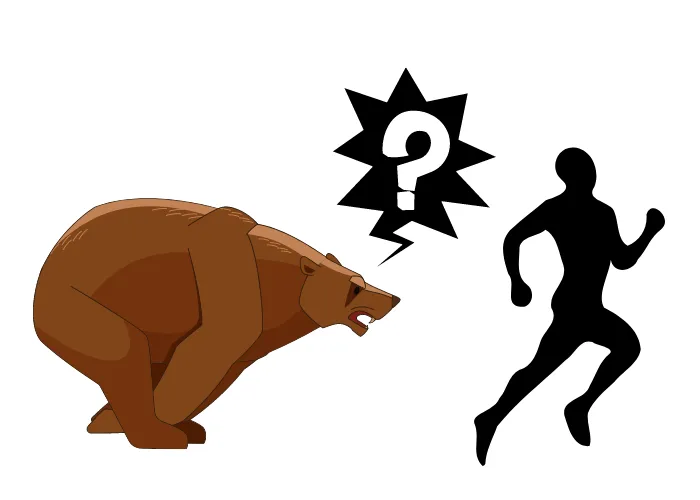
Olympian sprinters could not outrun any bears, and a Grizzly can cover 50 yards in 3 seconds. Think about that for a second.
Running away only excites the chase instinct in bears. Never attempt running away from any bear unless all efforts have failed with trying to avoid an altercation with Black Bears.
Large bears might attack and chase for territorial reasons; they’re mad or feel threatened. If you protect your vital, most vulnerable areas (around the back of the neck, for example), bears aren’t trying to kill (though it could happen if they’re trying to or not).
However, if a black bear attacks a human unprovoked, it will not stop after a point is made and will continue to eat you if you let them. That’s the most significant difference between black bears and all others.
So, all other options must be exhausted before succumbing to our knee-jerk reaction to take flight.
Can Bears Run Downhill?
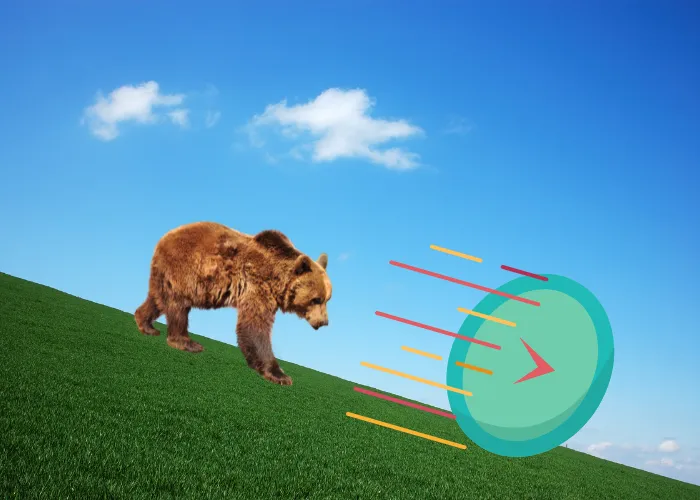
Bears can run downhill just as well as uphill or across a flat. The idea that bears can’t run downhill is a myth.
Final Thoughts
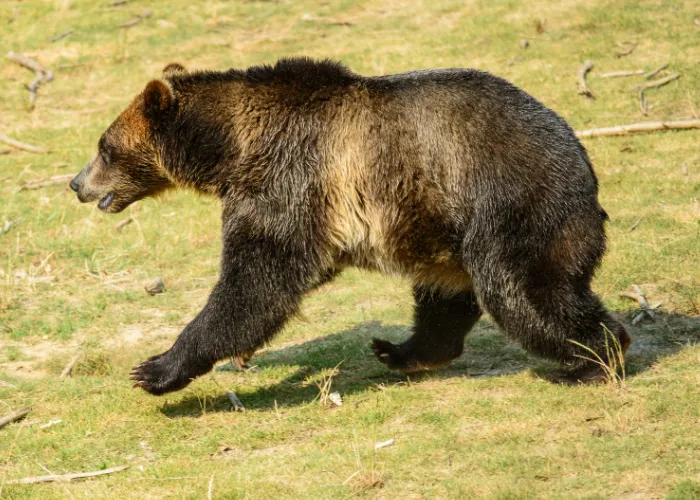
A group of bears runs the scene in their natural habitat. Few of us will be able to witness many of the different species of bear out there; for some, that is just fine.
But sometimes, our worlds collide, and we might run into one of these guys out on the trail or roaming through a neighborhood.
Knowing how fast these lumbering omnivores are, the best thing to do is keep your wits and assess whether or not you have a reasonable means of escape.
Running isn’t an option for us slow-footed humans.
RELATED ARTICLE: Can Bears Climb Trees?

